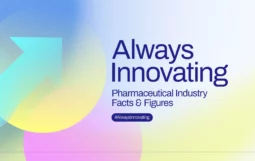Underuse of antibiotics could be a bigger problem than overuse
This article was originally published in Media Planet UK on November 18, 2019.
700,000 people around the world, who die each year through antimicrobial resistant (AMR) infections, would be on the minds of many during this year’s World Antibiotic Awareness Week.
AMR is a global health emergency caused by the overuse and misuse of antibiotics. If we do not take action, this alarming figure could rise to as many as 10 million, by 2050.
While we are aware of the consequences of drug-resistant bacterial infections, it is less well known that there are millions of people in low and middle-income countries (LMICs) who can’t access life-saving antibiotics. We ignore at our peril the problems associated with the failure to provide these life-saving medicines to the world’s poor. Today, it is feared that as many as 5.7m people die in LMICs each year because they cannot get the antibiotics they need.
Facilitating access for half of the world’s population that cannot obtain essential health services is a major challenge. Part of the solution requires getting antibiotics proven to work into the hands of tens of millions of patients in LMICs. These countries must cope with high burdens of infectious diseases and weak health systems and as a result, struggle to provide basic access to healthcare, including generic antibiotics.
The barriers to better access of antibiotics in LMICs
As the Centre for Disease Dynamics, Economics & Policy’s (CDDEP) director, Dr Ramanan Laxminarayan, pointed out in a recent report: “Lack of access to antibiotics kills more people currently than does antibiotic resistance, but we have not had a good handle on why these barriers are created.” And this crisis has been with us for decades.
CDDEP found that of 21 new antibiotics entering markets between 1999 and 2014, less than five were registered in most countries in sub-Saharan Africa. Health facilities in many LMICs are substandard and lack properly trained staff for administering antibiotics. In Uganda, 10 to 54% of health staff posts are unfilled because of poor pay, high stress, lack of resources, and poor management. As a result, there is inadequate staff available in wards to administer medicines, subsequently patients miss antibiotic doses, and public nurses sometimes request compensation for administering medicines.
India has a deficit of 600,000 doctors compounded by a shortage of 2 million nurses. Globally, 800m people spend at least 10% of their budget on health, pushing 100m of these each year into extreme poverty – forced to live on $2 a day.
High prices of treatment in LMICs
In the case of antibiotics one thing is clear, price of treatment should not be the reason preventing people from accessing them, since 90% of current antibiotics are ‘affordable’ generics. However, lower costs of generics are not always passed on to consumers; who often pay for the antibiotics from their own pockets.
In India, public sector procurement prices of certain older, off-patent, antibiotics (including amoxicillin, ampicillin suspension, doxycycline, and erythromycin) were higher than for newer antibiotics.
As recommended in the Chatham House Review of Progress on Antimicrobial Resistance, the problem of access to antibiotics can be remedied by providing quality healthcare to all, and moving towards universal health coverage in LMICs, as it will address the problems of both adequate access to antibiotics and restricting over-the-counter sales.
Thomas B. Cueni is Director-General of The International Federation of Pharmaceutical Manufacturers & Associations (IFPMA).
Author






